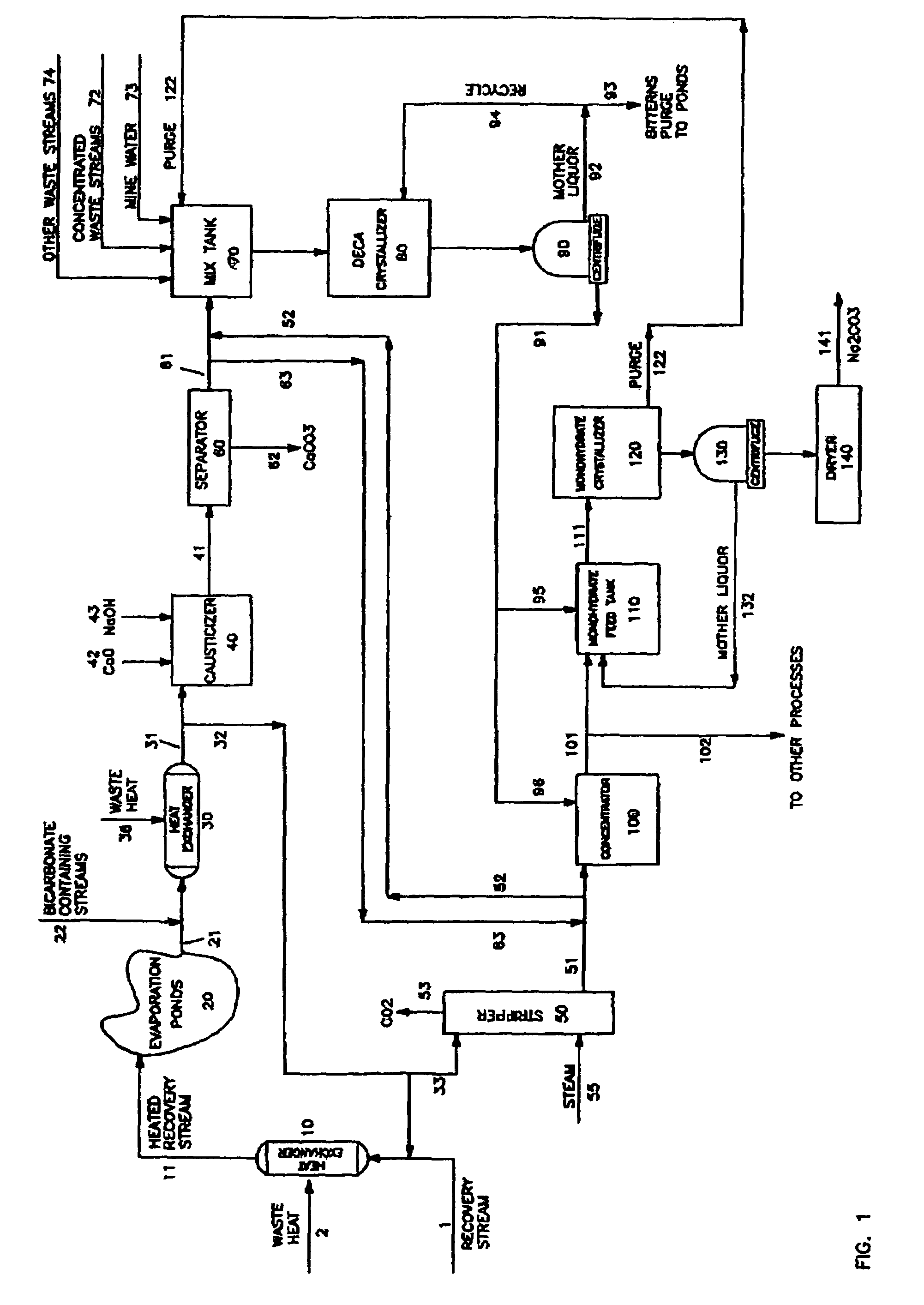Sodium carbonate recovery from waste streams and impounded sodium carbonate decahydrate deposits
a technology of sodium carbonate and waste streams, which is applied in the direction of alkali metal carbonates, chemistry apparatus and processes, and varying alkali metal carbonate water content, etc., can solve the problems of significant loss of total mined sodium carbonate from processing, limited process that produces more than one product, and significant economic cost of soda ash recovery processes. achieve the effect of prolonging the life cycle of surface impoundments, avoiding problems, and improving the recovery level of sodium values
- Summary
- Abstract
- Description
- Claims
- Application Information
AI Technical Summary
Benefits of technology
Problems solved by technology
Method used
Image
Examples
Embodiment Construction
[0016]Specifically, the present invention combines a variety of waste streams in proper proportions to produce a liquor stream wherein the sodium bicarbonate is reduced so as to suitably feed a sodium carbonate decahydrate process and recover soda ash. The beneficial results from the invention include:[0017]1. Reduces operating costs for producing sodium carbonate liquors in processes such as sodium carbonate monohydrate processes by displacing liquors produced directly from mined trona ore and / or solution mining processes with those produced from recovered sodium values in waste streams;[0018]2. Allows for combining various purge streams which are saturated in the desired salt with waste streams of lesser concentration, diluting said impurities to levels acceptable in recycle streams to the processing units; when the combined streams are further concentrated with sodium carbonate decahydrate, these streams are purified further;[0019]3. Provides a sodium carbonate decahydrate proces...
PUM
| Property | Measurement | Unit |
|---|---|---|
| concentration | aaaaa | aaaaa |
| concentrations | aaaaa | aaaaa |
| density | aaaaa | aaaaa |
Abstract
Description
Claims
Application Information
 Login to View More
Login to View More - R&D
- Intellectual Property
- Life Sciences
- Materials
- Tech Scout
- Unparalleled Data Quality
- Higher Quality Content
- 60% Fewer Hallucinations
Browse by: Latest US Patents, China's latest patents, Technical Efficacy Thesaurus, Application Domain, Technology Topic, Popular Technical Reports.
© 2025 PatSnap. All rights reserved.Legal|Privacy policy|Modern Slavery Act Transparency Statement|Sitemap|About US| Contact US: help@patsnap.com

